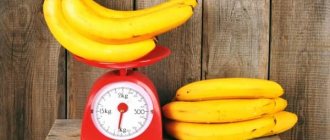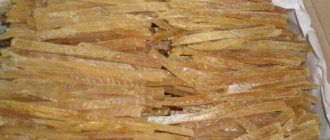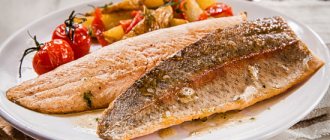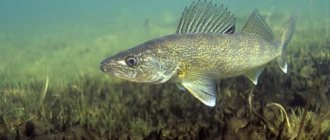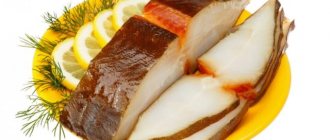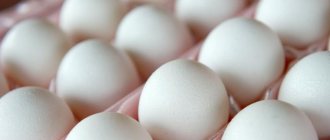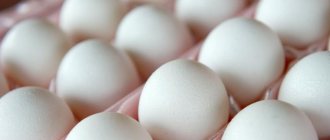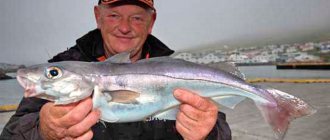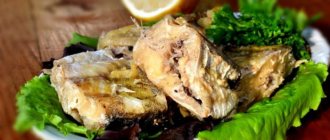Mackerel is very popular in Russia due to its bright taste and a large number of cooking methods: boiling, frying, baking, salting, smoking. But, in our country, unlike, for example, Japan, few people think about the incredible benefits of this fleshy sea fish for the human body. But with average calorie content, it is rich in vitamins, protein, fats, macro- and microelements, which benefit our health.
Mackerel is very popular in Russia due to its bright taste.
Beneficial features
The peculiarity of mackerel meat is that it contains no carbohydrates, but contains protein necessary for muscle tissue, as well as fats that strengthen the immune system and normalize metabolic processes.
Eating cold smoked mackerel promotes the following positive effects:
- strengthening the immune system;
- an increase in hemoglobin levels while maintaining normal cholesterol values;
- beneficial effects on the functioning of the central nervous system, elevating mood, relieving depression;
- ensuring and normalizing metabolism, gastrointestinal tract function;
- a positive effect on the activity of the cardiovascular system, preventing the formation of dangerous blood clots;
- improving the structure of hair and skin;
- prevention of the development of atherosclerosis, the occurrence of oncological tumors;
- positive effects on the functioning of the brain/spinal cord.
Cold smoked mackerel is very healthy. The phosphorus content in mackerel has a positive effect on the full functioning of almost all systems of the human body.
How carcasses are cut
Some representatives of salmon and sturgeon can be smoked whole carcasses - with or without the head. It is important to carefully remove the entrails and films, as well as cut off the fins. But there are other cutting methods for large and medium-sized carcasses:
In pieces. The gutted fish is cut into large U-shaped pieces 3-4 cm thick and smoked just like that.
Steaks. Large pieces are cut in half along the ridge, and then the bones are removed. You can also remove the skin.
Balyk and Tesha. The bellies, or tesha, are obtained as a result of cutting into balyk. The back is formed from a gutted carcass by cutting off the tail and removing the fins. The carcass is cut along the white line of the abdomen.
Butterfly. It is made from small fish by gutting it through a cut along the ridge, removing the tail and fins. Then they turn it inside out. The method is used mainly for not too fatty fish with dry meat.
Fillet. Clean the scales and gut the fish. Cut off the fins with scissors. Hold by the tail and cut off layers on both sides along the ribs. Some of the bones are removed with tweezers.
What kind of fish is smoked?
To get a tasty and aromatic product, you need to use only the freshest fish for smoking. If it has been frozen, it is absolutely not suitable for cooking in this way. With proper preparation, quick-frozen fresh fish can be turned into tasty and aromatic smoked meat.
Almost all fish of the cod family (track, haddock, hake), as well as herring, halibut, mackerel, flounder, bluefish and some other varieties are on sale. You can also find river fish, but they are less popular because they contain quite a lot of bones.
Useful tips
How to choose
Signs of quality fish:
- gills shiny, with a reddish tint;
- eyes bulging, clear;
- scales without damage;
- meat without spots, dense, elastic;
- The color of the meat is light, uniform, without yellowness or greyness.
Take either carcasses without heads (this is where the largest amount of toxins accumulates) or boneless fillets.
How to cook
- Defrost completely. It cannot be re-frozen.
- Rinse thoroughly in several waters.
- Pre-soak river fish for a couple of hours in a vinegar solution to remove the smell of mud.
- Cut carcasses and pieces for better boiling.
- Without salt and spices, the fish tastes too bland.
- It is better to boil and steam by adding carrots, onions, parsnips, parsley and celery (roots), bay leaves and allspice to the water.
- Fish broth is also considered dietary. To make it transparent, a special “draw” (whites with cold water) is prepared.
As it is
- When losing weight and as part of proper nutrition, it is combined with vegetable salads, stews, legumes, brown rice and buckwheat.
- Does not combine with potatoes, cabbage and pasta.
- It is better to eat for dinner, but 3-4 hours before bedtime.
- Serving size: 200-250 g.
- Frequency - 2-3 times a week.
To lose weight, you can choose a special fish diet, and in this case, low-calorie varieties will come in handy.
salted and smoked fish calorie content
| Name | Kcal | B | AND | U |
| lightly salted pink salmon | 169.0 | 21.0 | 9.0 | 0.0 |
| lightly salted trout | 227.0 | 23.0 | 15.0 | 0.0 |
| cold smoked pink salmon | 174.0 | 21.0 | 10.0 | 0.0 |
| lightly salted salmon | 240.0 | 29.0 | 19.0 | 0.0 |
| salted herring | 217.0 | 19.8 | 15.4 | 0.0 |
| spiced sprat | 154.0 | 14.8 | 10.5 | 0.0 |
| Atlantic salted herring | 145.0 | 17.0 | 8.5 | 0.0 |
| hot smoked cod | 115.0 | 26.0 | 1.2 | 0.0 |
| cold smoked bream | 172.0 | 32.8 | 4.5 | 0.0 |
| cold smoked mackerel | 150.0 | 23.4 | 6.4 | 0.0 |
| dried roach | 235.0 | 46.4 | 5.5 | 0.0 |
| dried bream | 221.0 | 42.0 | 5.9 | 0.0 |
| smoked mackerel | 221.0 | 20.7 | 15.5 | 0.0 |
| smoked eel | 326.0 | 17.9 | 28.6 | 0.0 |
| herring in oil | 301.0 | 16.4 | 26.5 | 0.0 |
| pickled herring | 192.0 | 16.5 | 12.6 | 3.4 |
| cold smoked tuna | 135.0 | ? | ? | ? |
| smoked herring | 150.0 | 24.0 | 6.0 | 0.0 |
What is red fish and its types
There are 2 ways to classify the so-called “red fish”. The first method is based only on the color of the meat, and from a biological point of view it is the most correct. Only representatives of salmon fish can be called red. However, there is another method for determining “red”. It is based on the benefits, price category and delicacy of the products.
According to this classification, red fish includes not only the salmon family, but also the sturgeon family.
Both varieties have a beautiful appearance, high nutritional value, and amazing taste. But most importantly, they contain a huge amount of protein, which is almost completely absorbed by the body, and also consist of omega-3 fatty acids, which cannot be obtained from other sources.
Salmonidae
When talking about red fish, they often mean the salmon family. Often all representatives of this genus are called salmon. They are divided into White Sea, Baltic, Atlantic and Pacific fish.
| Salmon | Coho salmon | Pink salmon |
| Lives in the northern waters of the Atlantic. It is distinguished by pink-coral meat with bright layers of fat. Large individuals weigh about 40 kg. | Fish from Kamchatka and California reaches 15 kg in weight. It has drier red meat than salmon, but contains more nutrients than pink salmon. | The fish weighs 3-4 kg and lives in the waters of the Pacific and Atlantic Oceans. The most numerous of the red ones. It is considered a dietary species. |
| 153 kcal, BZHU: 20 g, 8 g, 0 g | 140 kcal, BZHU: 21 g, 6 g, 0 g | 140 kcal, BZHU: 20.5 g, 6.5 g, 0 g |
| Char | Red salmon | Trout |
| Lives in the northern seas, as well as in Canada. Reaches 10 kg, but smaller fish are more common. Contains the maximum concentration of phosphorus. | Expensive red fish, distinguished by the brightest color of its flesh. Small in number, lives in North America, Kamchatka, near the Kuril Islands. | Wild trout live in rivers and lakes with cool water. Does not accumulate toxins. In terms of fat content, it is almost as good as salmon and is valued just like it. |
| 135 kcal, BZHU: 22 g, 6 g, 0 g | 157 kcal, BJU: 20.3 g, 8 g, 0 g | 148 kcal, BJU: 21 g, 7 g, 0 g |
| Chinook | Taimen | Chum salmon |
| The largest Pacific salmon, growing more than 120 cm in length. Contains a huge amount of omega-3 acids. | A very large fish, sometimes weighing more than 20 kg. Average carcasses weigh 4-5 kg. Lives in Siberian lakes, the Amur, and rivers of Mongolia. | Similar to pink salmon, but larger. It ranks 2nd in prevalence. |
| 148 kcal, BJU: 19.1 g, 8 g, 0 g | 119 kcal, BJU: 19 g, 5 g, 0 g | 127 kcal, BJU: 19 g, 6 g, 0 g |
| Whitefish | Lenok | Belorybitsa |
| Lives in cold rivers and fresh water bodies. Reaches 6 kg in weight. | Lives in foothill rivers and lakes of Siberia, China, Mongolia. Weighs up to 6 kg. | Lives in the Caspian Sea. Grows up to 14 kg. |
| 144 kcal, BJU: 19 g, 7.5 g, 0 g | 88 kcal, BJU: 16 g, 2 g, 0 g | 274 kcal, BJU: 21 g, 20.5 g, 0 g |
Squid
| rings | 45 | 1 | 13 | 241 |
| canned | 15.5 | 1.38 | 3.08 | 92 |
| smoked | 53 | 2 | 3 | 242 |
| pickled | 5.1 | 5.1 | 66.4 | |
| dried | 62 | 2 | 5 | 286 |
| dried rings | 49.07 | 1.93 | 3 | 225.67 |
| dried tentacles | 70 | 1 | 3 | 293 |
| tentacle | 70 | 1 | 3 | 301 |
Types of butterfish
The common name hides several varieties of marine life, similar in properties and appearance:
- Escolar. The smallest representative, which often ends up in nets along with tuna. Reaches 2 m in length and weighs 50 kg. Habitat: regions between Australia and Zealand. Escolar tastes like halibut and is distinguished by dense meat with a fat content of up to 13%. A similar type is the ruveta, but it has a different carcass shape.
- Stromateus. Fish up to 60 cm long, weight does not exceed 1.5 kg. It is considered very tender, tasty, nutritious. It lives in the south Atlantic in the waters of Brazil and Argentina.
- Seriolella. The fattest representative of the species, reaching a weight of 3 kg. Lives in the Pacific Ocean. Fat content reaches 40%.
Oilfish, or butterfish, is the collective name for all types of oil fish. They are used in cooking, but require special processing.
The note
Vladimir Kuznetsov
Professional smoker
Before cooking, you need to cut off the head of the butterfish and hang the fish by the tail for several hours to remove excess fat.
This step is mandatory because the main health hazard is concentrated in the fat of oily fish.
( 1 rating, average 4 out of 5 )
In what form is mackerel useful in the diet?
Cold smoked mackerel, the calorie content of which depends on the composition of the chosen recipe, in finished form will only be beneficial if the product is of high quality, the amount of food consumed is limited, and there are no medical contraindications.
Experts recommend using mackerel when dieting, baked in foil or a sleeve, steamed, boiled in slightly salted drinking water or canned. It is advisable to consume any of these dishes with fresh or heat-treated vegetables.
Calorie content of fish
If we talk about the calorie content of fish, it is important to take into account its variety, the conditions of its cultivation, and the method of preparation - only by summing up all these factors can you accurately determine the indicator. By regularly eating seafood, you give your body a lot of useful substances, and at the same time reduce the total calorie content of your daily diet.
Low-fat fish on a diet
Let's consider those varieties of fish and seafood whose calorie content is the lowest - less than 100 kcal per 100 g of product. These are the ones that are best suited for dietary nutrition when losing weight:
- pollock;
- burbot;
- zander;
- cod;
- hake;
- pike;
- shrimps;
- krill;
- mussels;
- crabs;
- horse mackerel;
- tuna.
Dishes made from these seafood are perfect for your table every day. It is important to consider that cooking fish using oil will increase the calorie content of the dish by an average of 30 kcal for every 100 g, so it is recommended to cook without it: boil, bake, steam or grill.
Calorie content of smoked fish
Of all the varieties of fish that are commonly smoked, only horse mackerel (94 kcal) and cod (115 kcal) are suitable for dietary nutrition. Most other varieties have a high energy value and do not fit into a low-calorie diet.
It is worth noting that any smoked products are quite difficult to digest, and given the fact that in modern conditions various chemicals are used during smoking, it is recommended to exclude such products if you eat properly.
Calorie content of fish in batter
Delicious fish in a crispy dough crust - a product clearly not for the diet table. Of course, a lot depends on the type of fish, but even if you choose relatively light tilapia, the dish will still turn out to be quite high in calories - 168 kcal per 100 g. Of course, this is not so much in comparison with other dishes, but for the diet, not a single fried the dish is not good. In addition, the combination of fats, carbohydrates and proteins at the same time is a difficult test for the stomach.
Fish calorie table
The three tables presented below indicate the composition and calorie content of the most popular varieties of fish in various preparations and the energy value of caviar. Based on such accurate information, you will always know how nutritious a particular dish is.
Do not forget that the figure indicated is standard - how many calories are in fish per 100 g. But, as a rule. A standard serving of fish per person ranges from 150 to 250 g, so you need to additionally calculate the calorie content of a serving.
Caviar
| white | 19 | 11 | 1 | 179 |
| pink salmon | 30.6 | 11.5 | 1 | 230 |
| artificial | 1 | 5 | 2.6 | 64 |
| canned | 19 | 11 | 1 | 179 |
| red | 31.5 | 13.2 | 1 | 249 |
| red chum salmon | 31.5 | 13.2 | 1 | 249 |
| flying fish (tobiko) | 13 | 3.1 | 10 | 92.13 |
| bream | 24.7 | 4.8 | 142 | |
| masago | 22 | 6 | 1 | 140 |
| pollock | 27.9 | 1.8 | 1.1 | 132 |
| capelin | 12.75 | 26.01 | 2.82 | 280.09 |
| shellfish | 13.8 | 4.3 | 2.5 | 104 |
| sea urchins | 13.8 | 4.3 | 2.5 | 104 |
| halibut | 20 | 3 | 107 | |
| carp | 18.5 | 12.5 | 1 | 179 |
| zander | 17.5 | 2 | 88 | |
| silver carp | 8.77 | 6.21 | 12.85 | 136.84 |
| cod | 19 | 11 | 1 | 179 |
| snails | 16.1 | 1.4 | 2 | 90 |
| black | 26.8 | 13.8 | 0.8 | 235 |
| black beluga | 27.2 | 14.2 | 237 | |
| black sturgeon | 38.2 | 14.5 | 1.5 | 289 |
| pike | 28.4 | 1.9 | 131 | |
| ovary | 17.5 | 2 | 88 |
canned fish calories
| Name | Kcal | B | AND | U |
| natural pink salmon | 138.0 | 21.0 | 6.0 | 0.0 |
| Cod liver | 613.0 | 4.2 | 65.7 | 1.2 |
| sardines in oil | 249.0 | 17.9 | 19.7 | 0.0 |
| saury in oil | 283.0 | 18.3 | 23.3 | 0.0 |
| mackerel in oil | 278.0 | 13.1 | 25.1 | 0.0 |
| tuna in oil | 231.0 | 22.0 | 25.9 | 0.0 |
| sprats | 563.0 | 17.4 | 32.4 | 0.4 |
| pink salmon in tomato sauce | 132.0 | 14.5 | 5.1 | 6.9 |
| flounder in tomato sauce | 125.0 | 12.6 | 5.4 | 6.3 |
| sardines in tomato sauce | 162.0 | 17.0 | 9.9 | 1.4 |
Storage rules
There is no such thing as too much of a delicacy – this rule is very suitable for smoked fish. You, of course, can prepare it for future use, but there is not much point in this: hot smoked salmon can be stored in the refrigerator for more than 4-5 days. With a cold, less aggressive processing method, this period increases to several weeks. Store in the refrigerator wrapped in parchment or foil.
Storing salmon in the freezer
Freezing will double or triple the shelf life of smoked meats, but after defrosting, even gentle, you can’t count on the original taste of the fish.
Vitamins in Hot smoked fish
Hot smoked fish contains the following vitamins: Water, Sulfur, Chromium, Fluorine, Molybdenum, Nickel, Zinc, Chlorine.
| Vitamin PP (Niacin equivalent), mg | 2,905 |
Calorie content and chemical composition of other products
| Product | Kcal | Proteins, g | Fats, g | Angle, g | |
| Baked or Fried Fish | 126 | 21,94 | 3,44 | 0,33 | |
| Grilled fish | 109 | 22,6 | 1,18 | 0,28 | |
| Crab sticks | 88 | 17,5 | 2 | 0 | |
| Fish sprats | 136,8 | 17,1 | 7,6 | 0 | |
| Canned sprats | 363 | 17,4 | 32,4 | 0 | |
| Minced fish | 99 | 15,18 | 0,9 | 6,85 | |
| Fish balyk | 194 | 20,4 | 12,5 | 0 | |
| Semi-finished fish products | 209,2 | 12,5 | 6,7 | 14,7 | |
| Frozen fish sticks | 206 | 9,47 | 8,65 | 22,34 | |
| Canned fish | 88 | 17,5 | 2 | 0 | |
| Dried fish | 88 | 17,5 | 2 | 0 | |
| Marinated fish | 82 | 1,7 | 3 | 11,4 | |
| Dried fish | 88 | 17,5 | 2 | 0 | |
| Lamprey fish | 88 | 17,5 | 2 | 0 | |
| Pickled lamprey | 88 | 17,5 | 2 | 2 | |
| Sprat pate | 195 | 12 | 14 | 5,3 | |
| Fish fillet | 90,57 | 15,17 | 3,5 | 0 | |
| Fish burgers | 113 | 12 | 0,8 | 19 | |
| Yukola | 88 | 17,5 | 2 | 0 | |
| Fish steak | 155 | 12,8 | 6 | 12 | |
| Smoked fish | 195,88 | 26,78 | 9,88 | 0 | |
| Salty fish | 190,75 | 19,23 | 2 | 0 | |
| Bester fish | 147 | 21 | 0,7 | 0 | |
| Surimi | 99 | 15,18 | 0,9 | 6,85 | |
| Fish straw | 231 | 46 | 3 | 5 | |
| Fish roll | 139,3 | 11,8 | 7,53 | 9,74 | |
| Fish stroganina | 172,6 | 34,3 | 3,9 | 0,5 | |
| White fish, all types, smoked | 108 | 23,4 | 0,93 | ||
| White fish, all types, cooked | 172 | 24,47 | 7,51 | ||
| White fish, all types, raw | 134 | 19,09 | 5,86 | ||
| Drawer, all types, cooked in the heat | 128 | 26,3 | 1,72 | ||
| Drawer, all types, raw | 100 | 20,51 | 1,34 | ||
| Stuffed fish in sweet sauce | 84 | 9,07 | 1,73 | 7,41 | |
| Semi-finished fish products, frozen, heated | 249 | 11,04 | 13,25 | 21,18 | |
| Spot cooked in the heat | 158 | 23,73 | 6,28 | ||
| Spot, raw | 123 | 18,51 | 4,9 | ||
| Fish food waste | 88 | 17,5 | 2 | ||
| Hot smoked fish | 88 | 17,5 | 2 | ||
| Skin, bones, fish scales | 88 | 17,5 | 2 | ||
| Fish bones | 88 | 17,5 | 2 | ||
| Lichnya | 88 | 17,5 | 2 | ||
| Mavrolycus | 173 | 14 | 13 | ||
| Notoscopelus crowderi | 219,5 | 15,5 | 17,5 | ||
| Small fish (I category) | 88 | 17,5 | 2 | ||
| Salted fish | 88 | 17,5 | 2 | ||
| Cold-smoked Azov-Black Sea tripe | 88 | 17,5 | 2 | ||
| Cold smoked fish | 88 | 17,5 | 2 | ||
| Canned fish in oil | 88 | 17,5 | 2 | ||
| Canned fish in tomato sauce | 88 | 17,5 | 2 | ||
| Sprats in oil. Canned food | 363 | 17,4 | 32,4 |
How to smoke red fish: recipes for cold and hot methods
Red fish can be divided into 3 categories: inexpensive, such as pink salmon, middle segment, such as sockeye salmon, and exquisite, which includes salmon and many sturgeon. However, “red” does not only mean a product with a scarlet tint of meat... And smoking each of these types implies a result that is surprising in taste, appearance and nutritional value.
Selection and storage of smoked mackerel
Eating improperly prepared cold smoked fish is fraught with opisthorchiasis infection with possible damage to the pancreas.
To avoid such a threat, the following recommendations should be considered when choosing a product:
- a good fish is characterized by a golden and uniform color;
- the presence of light stripes on the sides of the carcasses indicates a violation of the technological process: too large a batch was processed in the smoking chamber, as a result of which the mackerel remained unsmoked on both sides;
- the presence of scratches, loose skin structure, cuts or stains on the fish is a sure sign of poor-quality smoking of raw materials;
- The absence of an appetizing odor characteristic of the finished product also confirms violations committed in the technological process or weathering of the aroma due to the fish being on the store counter for a long time.
For long-term storage of the product, room humidity (90%) and ventilation should be maintained. The packaging (container), if it is not a vacuum case, must necessarily allow air to pass through.
A safe place to store smoked fish is considered to be a separate shelf of the refrigerator, on which the mackerel will not come into contact or exchange odors with other products.
A freezer can become such a place, provided it contains a fresh, just prepared product, wrapped in foil (thick paper). The maximum shelf life in the refrigerator is limited to 72 days; at room temperature this period is 24 hours.
Vacuum packaging can extend the shelf life of smoked fish, as well as adding juniper branches or special substances during the cooking process that prevent the proliferation of pathogenic microbes.
A proven way to preserve the freshness of the product is to soak it in a solution of table salt and drinking water (1:2). The resulting composition should be used to saturate the cotton fabric in which the smoked food should be wrapped. Then you need to place the packaged product in thick paper and keep the food on the bottom shelf of the refrigerator.
What changes occur in fish when smoked?
During smoking, changes occur in the fish that give it specific properties - aroma, taste, appearance, consistency.
Collagen is converted to glutin, which promotes the gelation of fiber, septa and perimysium located under the skin. It becomes denser due to drying, and the dermis peels off from the muscles and swells.
Collagen is destroyed, which leads to loosening of muscle tissue. Fat redistribution occurs in fish.
Along with the loss of moisture, the mass of raw materials is also lost. This process is affected by the speed at which the smoke moves inside the smoking chamber and its temperature.
The skin of the mackerel turns golden because the smoke settles on it. The intensity of coloring depends on the humidity of the smoke and the duration of the process.
In nuts, dried fruits and mushrooms
In nuts and mushrooms, as in vegetables, protein is contained mainly in scattered form. Some types of nuts contain large amounts of protein, which will help restore protein balance in the body on a plant-based diet.
Contents (per 100 grams):
| Mushrooms (white) | 3.7g |
| Champignon | 4.3g |
| Dried apricots | 5.3g |
| Dates | 2.5g |
| Prunes | 2.3g |
| Raisin | 1.9g |
| Peanut | 26.3g |
| Almond | 18.6g |
| Cashew | 18.2g |
| Pistachios | 20.3g |
| Hazelnut | 16.1g |
| Brazilian nut | 14.3g |
| Walnut | 13.6g |
Cold smoking in a smokehouse
Fish treated with cold smoke is no less tasty. It is not difficult to prepare cold smoked capelin at home in a smokehouse. The process, however, is longer and will take up to 14 hours.
In this case, you also need to salt the capelin for cold smoking. And only then the fish is laid out on the grill in the smoking cabinet. In devices with a vertical arrangement, it is hung on hooks behind the eyes.
Chips from fruit trees are suitable for smoking capelin in a cold smokehouse; alder is also often used. Walnut and beech can replace them. To get cold-smoked capelin with a special aroma, you can add a little sage or bay leaf along with the wood chips; blackberries and rosemary are also used as additives.
The temperature is maintained around 25 degrees. A prerequisite is to air the fish for half an hour after cooking.
Pickled
| pink salmon | 20.9 | 5.8 | 136 | |
| crucian carp | 15.52 | 8.21 | 0.56 | 135.93 |
| carp | 13.56 | 8.69 | 1.41 | 138 |
| salmon | 21 | 17 | 237 | |
| lamprey | 17.5 | 2 | 88 | |
| capelin | 13.6 | 18.1 | 217 | |
| herring | 14.19 | 18 | 9.64 | 262 |
| som | 11.44 | 7.38 | 0.26 | 116 |
| mackerel | 1 | 0.9 | 6.1 | 36.9 |
| silver carp | 9.9 | 10.3 | 3.3 | 145.6 |
| trout | 20.02 | 6.15 | 136.48 | |
| pike | 10.55 | 1.43 | 54.58 |
How to choose the right red fish
Whole carcasses are preferable to portioned meat, given that almost all parts of the fish, with the exception of entrails and fins, can be consumed. But the main thing is that the fish is fresh. And it is by looking at the whole carcass that it is easiest to determine the degree of suitability of the meat, as well as to distinguish Atlantic salmon from other members of the family. Thus, the salmon has a sharper head than the trout, its scales are not speckled and are characterized by a pearlescent sheen, it has thin elongated fins and characteristic white veins on the body.
Appearance of fresh salmon
When choosing meat cut into steaks, pay attention to the edges; they should be smooth and sharp. The blurriness means that the slices were soaked in solvents to remove the unpleasant smell of spoiled product.
Fresh fish has elastic meat - when pressed, the concavity quickly levels out. A universal way to distinguish fresh fish from repeatedly frozen fish is to evaluate the condition of the ice crust; if it is thin and transparent, everything is in order. The presence of snow will clearly indicate an unacceptable duration of storage and repeated freezing.
Canned
| anchovies | 20.1 | 6.1 | 135.3 | |
| pink salmon | 20.9 | 5.8 | 136 | |
| carp | 13.56 | 8.69 | 1.41 | 138 |
| sprat | 17.5 | 2.2 | 88 | |
| salmon | 20.57 | 6.28 | 144 | |
| saury | 17.5 | 2 | 88 | |
| sardines | 19 | 10 | 166 | |
| herring | 17.5 | 2 | 88 | |
| mackerel | 14.4 | 28.9 | 317.7 | |
| cod | 22.76 | 0.86 | 105 | |
| tuna | 29.13 | 8.21 | 198 | |
| sprats | 17.4 | 32.4 | 363 | |
| trout | 18 | 10 | 162 |
